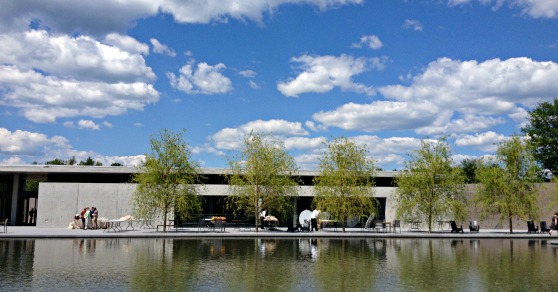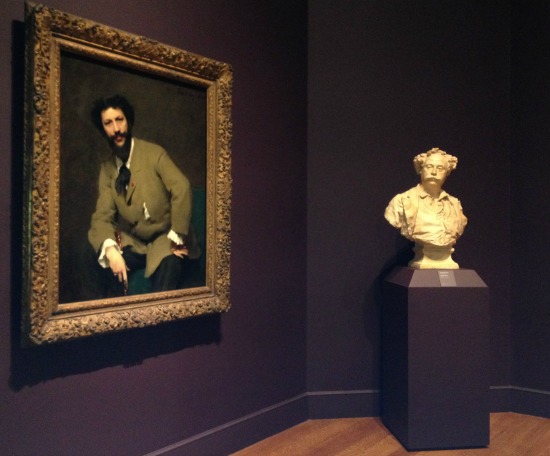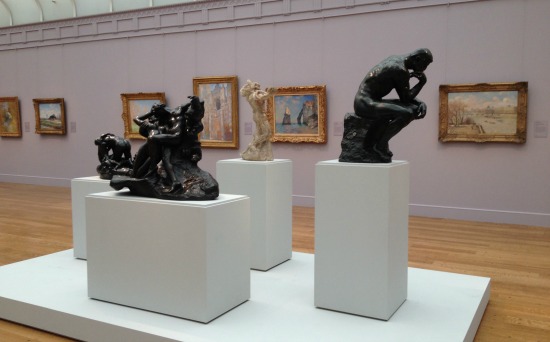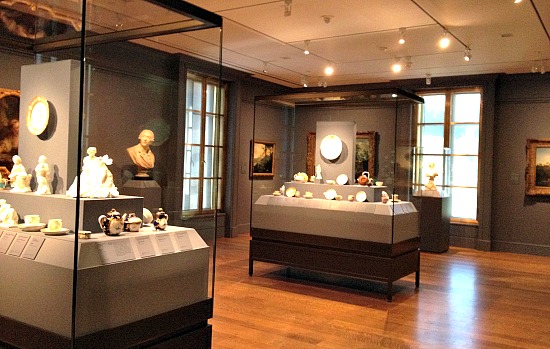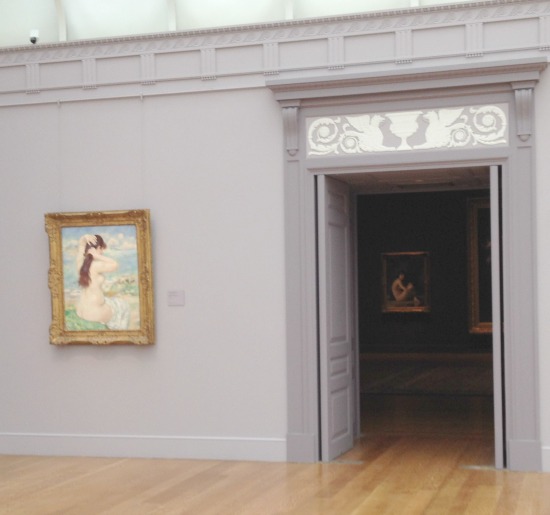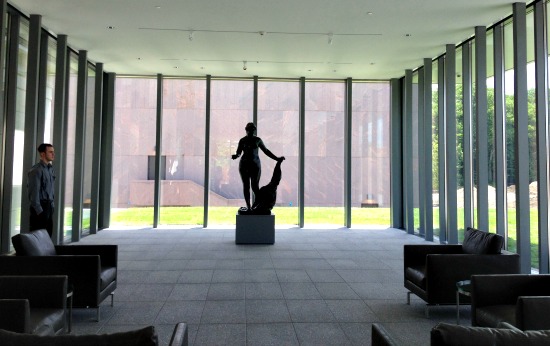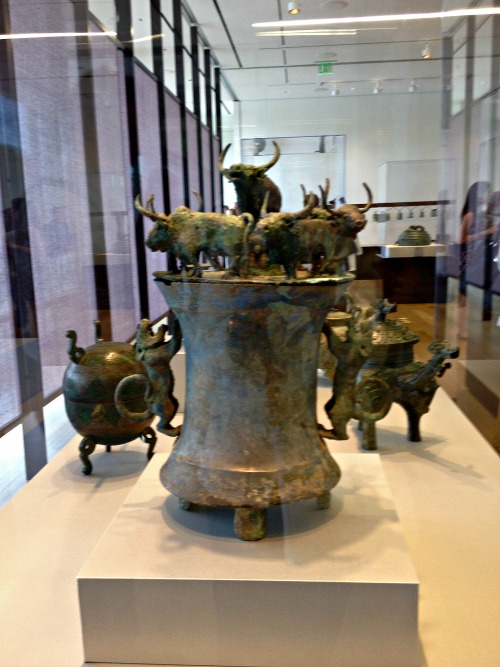The Sterling and Francine Clark Art Institute has set its Grand Re-opening for July 4, but since last week, director Michael Conforti and his team have been showing it off to the press, officials of other museums, donors and other powers-that-be. I was there last Friday afternoon, with much of the other press (but I did not stay for the evening festivities or for the Saturday events).
The project started with a master plan in 2001, and involved other openings and changes over the years — which I am not going to relate here. At the moment, the Clark is unveiling its new visitors center, special exhibition galleries, renovation of the original museum building and reinstallation of its permanent collection, a lot of landscaping and more. Tadao Ando was architect of the new building, which beautifully attaches to the original museum, where Annabelle Selldorf did the honors renovating the old museum. Some work, on the Manton Research Center, which used to hold the special exhibition galleries, remains to be completed. You can find out details on the architecture initiatives here.
Interestingly, most of the pictures I’ve seen are of this view, which is of the new Visitor Center across the new reflecting pool. The old museum is off to the right.
I’m going to give the Clark an A, but not an A-plus. Both Ando and Selldorf did marvelous jobs. The lower-level and ground floor galleries (now filled with “Cast for Eternity” (a show of Chinese bronzes) Â in the new building are wonderful, and flexible, and the public spaces — cafe, museum store, information areas are all beautiful, functional and mostly welcoming. One slight misfire: the “living room” area joining the old and the new has a cold feel to me — very gray in all aspects (see below) — but I am not sure how I’d warm it up.
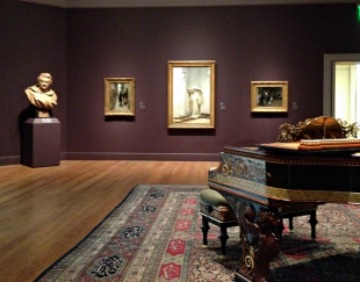 Selldorf made the old building better, turning long corridors filled with art into a series of real, nicely-sized and proportioned galleries filled with art. More art is out, including some loans. Someone said the galleries look the same, only better, and that’s about right. I love that the first gallery visitors is is filled with paintings by Winslow Homer — they stare right at West Point, Prout’s Neck, which is hung in the center of the facing wall. In the last iteration, the first painting visitors saw in the permanent collection was John Singer Sargent’s Fumée d’ambre gris (Smoke of Ambergris), which is now in the Academic Gallery (at right).
Selldorf made the old building better, turning long corridors filled with art into a series of real, nicely-sized and proportioned galleries filled with art. More art is out, including some loans. Someone said the galleries look the same, only better, and that’s about right. I love that the first gallery visitors is is filled with paintings by Winslow Homer — they stare right at West Point, Prout’s Neck, which is hung in the center of the facing wall. In the last iteration, the first painting visitors saw in the permanent collection was John Singer Sargent’s Fumée d’ambre gris (Smoke of Ambergris), which is now in the Academic Gallery (at right).
Plus, the groupings, juxtapositions, revealing viewpoints and dialogues among the paintings make for an excellent hanging (e.g., see the photo below, which I have over-exposed to show how the Renoir nude and the Bougereau nude can be seen and compared from across the gallery).
So what’s wrong? While I was talking with Conforti — who is to be congratulated for his vision — he did say one thing that bothered me. That was, the Clark is now a community center, and if people want to come and use the grounds, eat at the cafe, play with the waterfall, shop in the store, etc., that was fine with him. Well, to me, that depends. People have always walked the grounds of the Clark, and that’s fine with me too. But if they are coming to the “museum,” they ought to see some art, no?
I proposed the addition of one outdoor sculpture, and Conforti conceded that they’d considered it — and may yet do it. So as not to distract from the emphasis on nature at the Clark, I suggested a Roxy Paine. Conforti was right to say that too many other museums have placed a Paine on their grounds. Rather, he considered a bronze tree by Giuseppi Penone, which would be fine by me. James Turrell is also going to visit, and may do a skyspace, and Janet Cardiff was there Friday to scout out a possible sound installation.
But there are plenty of other options. I just want visitors who don’t go into the galleries to know that they are at a museum. Always, the art comes first, then the other things.
For those who want more information, here is the Clark Expansion Fact Sheet. And I’ve posted a few more of my photos from Friday below (from my iPhone, so not always the best quality).
Photo Credits: © Judith H. Dobrzynski Â

